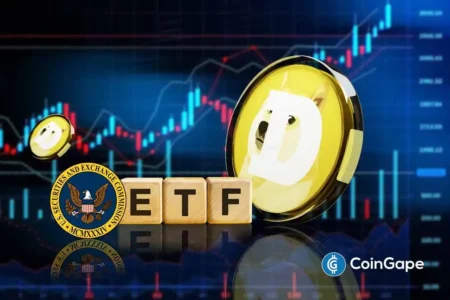Crypto Market Update: Navigating Bearish Trends and Regulatory Developments
The cryptocurrency market is currently witnessing significant price volatility, marked by sell-offs from major holders, ongoing legal challenges, and shifting investor sentiments. As Bitcoin continues its bearish trend, fueled by macroeconomic factors and liquidity concerns, it’s crucial for investors to stay informed about the latest developments in the industry. This article provides a comprehensive analysis of the latest market conditions, with a focus on Bitcoin’s performance, altcoin trends, the implications of recent sell-offs, and the impact of regulatory actions.
Bitcoin and Altcoin Trends Amid Market Pressure
Since late March 2025, Bitcoin (BTC) has struggled to maintain momentum, staying below the critical 200-day simple moving average. This trend signals a prevailing bearish sentiment among investors, with forecasts indicating that pressure on the crypto markets may persist through the third quarter of the year. As of the latest updates, Bitcoin is valued at $84,336.30, reflecting a modest increase of just 0.4% from the previous day. However, daily trading remained volatile, oscillating between $83,592.79 and $85,311.80.
This bearish trend is not limited to Bitcoin alone; other altcoins are also under pressure. Ethereum (ETH) experienced a dip of 1.1%, closing at $1,588.68, while Cardano (ADA) and SUI both recorded declines, landing at $0.6130 and $2.11 respectively. In contrast, XRP fluctuated between a weekly high of $2.25 and a low of $2.07, demonstrating the uncertain landscape of digital currencies. Notably, Solana (SOL) defied the negative market trend by gaining 3.7% to trade at $132.69, bolstered by significant investment from fintech company Janover, which acquired an additional $10.5 million worth of Solana tokens.
Whale Sell-Offs: Dogecoin and the OM Token Collapse
This week marked a notable sell-off within the Dogecoin (DOGE) community, where several large holders liquidated over 570 million DOGE tokens. This drastic action led to a 7.2% drop in DOGE’s price, plummeting from $0.1680 to $0.15594. On-chain data from Santiment revealed that these whales held between 10 million and 100 million DOGE each, indicating concentrated holdings that can exacerbate price swings.
In a more severe scenario, the OM token from Mantra experienced a catastrophic collapse of over 90% on April 13, dropping from $6.30 to below $0.50. Bitget CEO Gracy Chen cited concentration among holdings and inadequate liquidity during weekends as critical factors contributing to the token’s crash. Such high-profile collapses raise red flags regarding liquidity risks across the crypto industry, drawing parallels to the infamous Terra-Luna crisis.
Ripple vs. SEC: Settlement Talks Halted
Another critical development involves Ripple Labs, which has been embroiled in legal battles with the U.S. Securities and Exchange Commission (SEC) since 2020. Recently, an appeals court has put a pause on these proceedings to allow for negotiations between Ripple and the SEC. This move has raised questions regarding the potential for a settlement, with updates anticipated by June 15. The SEC claims Ripple’s XRP token is an unregistered security, a point of contention that could reshape the regulatory landscape for cryptocurrencies if resolved.
In the realm of enforcement, the state of Oregon has initiated a securities enforcement action against Coinbase, reinforcing a legal climate that continues to scrutinize crypto exchanges and their practices. The complaint mirrors previous charges brought by federal regulators, underscoring the need for clear guidelines and regulations in the digital asset space.
Security Threats and Institutional Moves in Crypto
As market volatility escalates, security concerns remain a priority. Kenny Li, co-founder of Manta Network, revealed he was targeted in a sophisticated phishing attack that exploited a manipulated Zoom meeting. The attackers used familiar faces and a fake agenda to distract Li, highlighting the importance of vigilance against such threats in the crypto sector.
On the institutional front, the Justice Department continues its legal action against former SafeMoon CEO Braden John Karony amidst allegations of fraud and money laundering. Despite a recent memo calling for a more laid-back approach towards crypto enforcement, prosecutors in New York are poised to press forward with their charges, further exhibiting the tensions between innovation in the crypto space and regulatory oversight.
Semler Scientific, a healthcare technology company, faces significant challenges due to a $41.8 million paper loss on its Bitcoin holdings reported in Q1 2025. Regardless of these losses, Semler intends to issue up to $500 million in new securities to bolster its Bitcoin acquisition strategy, emphasizing the ongoing institutional interest in digital assets despite market fluctuations.
Growth Initiatives and Regulatory Evolution
Amidst the challenges, several firms are making strides to enhance their presence in the crypto industry. VanEck has launched a new actively managed ETF called NODE, designed to provide exposure to companies involved in the digital asset ecosystem. This ETF encompasses 30 to 60 stocks linked to exchanges, miners, and blockchain infrastructure, representing an evolving investment vehicle for traditional investors.
In a notable pivot, OKX, a cryptocurrency exchange, is making inroads into the U.S. market with the phased launch of its trading platform and a Web3 wallet. This strategic move includes establishing a new headquarters in San Jose, alongside publishing monthly proof-of-reserves reports to foster user trust and transparency.
Regulatory shifts are also on the horizon, as Federal Reserve Chair Jerome Powell recently indicated that a “loosening” of crypto rules for banks may be forthcoming. Speaking at The Economic Club of Chicago, Powell acknowledged that regulators have taken a cautious stance but now recognize the growing mainstream acceptance of cryptocurrency. This development suggests a potential easing of restrictions, which could accelerate institutional adoption and investment in digital assets.
Conclusion: Adapting to the Changing Crypto Landscape
The cryptocurrency market is currently navigating a daunting landscape characterized by volatility, regulatory scrutiny, and security concerns. Investors must remain vigilant and informed, as macroeconomic factors continue to influence market dynamics. The recent sell-offs, coupled with the Ripple SEC case and emerging institutional moves, underscore the complexity of the current market environment.
As the industry evolves, stakeholders must adapt to the changing regulatory landscape while being mindful of the risks associated with investing in digital currencies. The developments in the coming months will be crucial in determining the future trajectory of the crypto market, and staying abreast of these changes will be integral for those looking to navigate the digital asset space successfully.
















